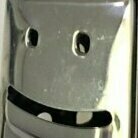re 72 years ago
-
-
Latest Discussions
-
Thankyou so so much tam. Your def a at angle. I was so so worried. Your a good man, we need more like your good self in the world. Thankyou for the bottom of my heart. Pepper is pleased to be back
-
I have your cat , she’s fine , you can phone me on 07883 065 076 , I’m still up and can bring her to you now (1.15 AM Sunday) if not tonight then tomorrow afternoon or evening ? I’ve DM’d you in here as well
-
This week's edition of The Briefing Room I found really useful and impressively informative on the training aspect. David Aaronovitch has come a long way since his University Challenge day. 😉 It's available to hear online or download as mp3. https://www.bbc.co.uk/programmes/m002n7wv In a few days time resident doctors -who used to be known as junior doctors - were meant to be going on strike. This would be the 14th strike by the doctors’ union since March 2023. The ostensible reason was pay but now the dispute may be over without more increases to salary levels. The Government has instead made an offer to do something about the other big issue for early career doctors - working conditions and specialist training places. David Aaronovitch and guests discuss what's going on and ask what the problem is with the way we in Britain train our doctors? Guests: Hugh Pym, BBC Health Editor Sir Andrew Goddard, Consultant Gastroenterologist Professor Martin McKee, Professor of European Public Health, London School of Hygiene and Tropical Medicine Mark Dayan, Policy Analyst, Nuffield Trust. Presenter: David Aaronovitch Producers: Caroline Bayley, Kirsteen Knight, Cordelia Hemming Production Co-ordinator: Maria Ogundele Sound Engineers: Michael Regaard, Gareth Jones Editor: Richard Vadon
-
That was one that the BBC seem to have lost track of. But they do still have quite a few. These are some in their 60s archive. https://www.bbc.co.uk/programmes/m0028zp6
-
East Dulwich Forum
Established in 2006, we are an online community discussion forum for people who live, work in and visit SE22.


Recommended Posts
Create an account or sign in to comment
You need to be a member in order to leave a comment
Create an account
Sign up for a new account in our community. It's easy!
Register a new accountSign in
Already have an account? Sign in here.
Sign In Now